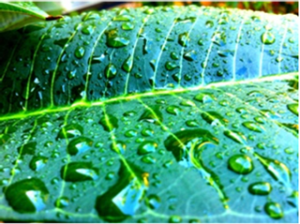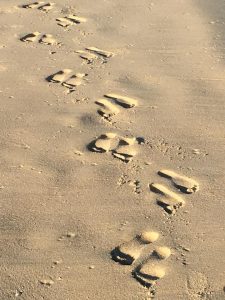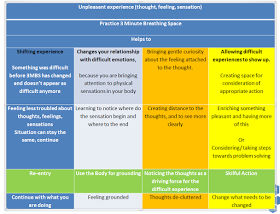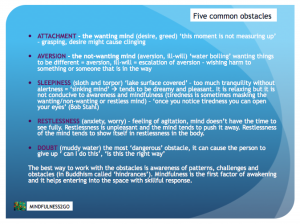‘I am busy’ seems to be the default answer to the question: ‘How are you?’ The ‘I am well, how are you?’ automatic response seems to be replaced by ‘I am busy, you too?’. Telling each other how we busy we are is indicating how important we are, and it also implies that being busy is the new ‘usual’. Being busy is a benchmark that ‘decides’ who is worthy, or who is not, who is important, or who is not, who is lovable or who is not and so on. The ‘I am busy, I am worthy’ message does have the potential to be an underlying driver of our response and believe in being busy all the time.
The ongoing multi-tasking overload, the constant need to be on the go, every minute checking of our phones, the jumping from one task to the next, juggling demands, appointments and meetings is fed by the need to control our lives all the time. No wonder why we believe we are busy, because there is so much to do at home or at work. Workloads are increasing, resources and budgets are dropping, we are expected to do more for and with less. Everywhere is demand and there doesn’t seem to be an end to it. The result is that we feel exhausted and stressed and we do the best we can to meet daily challenges. And we accept and believe that life is busy – full stop.
Brené Brown once said: ‚one of the most universal numbing strategies is what I call crazy-busy’. There is no need to be busy. Of course, there are many tasks and duties we got to do, but believing we are busy all the time doesn’t seem to help, and it doesn’t seem to be a true reflection of facts. We are feeling busy because it feels good, it implies a status symbol and provides a sense of being in charge and being important. Being busy doesn’t mean that we must make tough decisions, decisions are already made, and we simply act on it. External demands and circumstances are in control of our way of lives. So being busy is an easy way out. It actually takes courage to step out of this vicious cycle.
‘Ben Hunnicutt, professor of leisure studies at the University of Iowa, explains, busy is actually one of the seven deadly sins; it is slothfulness. In the Middle Ages, slothfulness had two forms: one is lazy, the other – acedia – is running about frantically. “There is no real place I’m going, but by God, I’m making great time getting there.” (taken from Tony Crabbe, https://www.personneltoday.com/hr/five-reasons-everyone-busy-tony-crabbe/ ) How thought provoking.
Yes, think about it. There are many reasons why we are busy: avoiding making tough decisions, being addicted (dopamine release), society demand, reward and expectations.
So, the question is how can we work with this trend more wisely, and how can we respond with mindfulness and compassion?
A few questions to consider: what to say when being ask ‘are you busy too?’, ‘how to deal with the inner critic and judgment?’, ‘how to deal with a sense of unworthiness that might be evoked when our answer is ‘I am not busy’?’, and ‘how to deal with a sense of guilt that may surface when we are not buying into the mandatory busyness default reaction?’.
What to answer: As we all know the answer is not only words, it also contains non-verbal cues and can be displayed in posture, facial expression and gestures. Perhaps taking in an attitude of compassion for the other could help to start with. Take a breath or two before responding. Be aware that the feeling of being busy has underlying reasons (fear to be unimportant, unworthy, unlovable, bored, underachiever, vulnerable). Rather than saying ‘yes, I am busy too’ – see whether it is possible to say ‘I am focusing on … at the moment’.
Dealing with the inner critical voice and feeling of guilt: Keep in mind that probably no one ever said to you ‘what, you are not busy, then you must not be important, or must not be clever, or must not skilled enough’. Right? But you can hear that voice inside acting as if this would be the truth. The good thing is that it is not the truth. It is just our mind that is making it up.
Nevertheless, you are perceiving and experiencing a combination of tasks not as busy, but your mind may come up with the same story again ‘what, you are not busy?, ‘everyone is, what is wrong with you, you should be busy, others are too, you should work harder …’ Does that sound familiar? And it might evoke a sense or feeling of guilt too.
The invitation is to simply notice and acknowledge the thoughts, to bring kindness to the mind and body by practicing self-compassion. Descend awareness into the body, ground and anchor yourself. For example, being aware of the soles of your feet, being aware of all senses, placing your hands over that part of the body where you feel the judgement or guilt or any other feeling the most. Notice the gentle touch and the gentle rising and falling of this part of the body with every in-and outbreath.
The regular practice of mindfulness meditation and compassion helps developing greater capacity for attending to and being with any discomfort. The brain becomes less hooked and reactive with further practice. A very useful practice for coping is the three minute breathing space. Feel free to listen and practice it on https://soundcloud.com/mindfulness2go/three-minute-breathing-space
Explore your relationship with ‘being busy’: Do you find yourself saying ‘I am busy’ very often? Then a good way to explore this to list every task and activity right from waking up in the morning until you go back to bed at the end of the day.
Write down what happens during the day, morning, afternoon, evening, work days, weekends. Maybe just chose one typical day of yours and see whether you can be detailed and specific (include brushing teeth, shower etc). Once the list is done have a look at it. What do you notice?
Then go through every task on the list and divide the list into things that lift your mood or that feel nourishing and into things that feel more draining or depleting. Put an ‘N’ next to all things that are perceived as nourishing and put a ‘D’ next to all things that dampen your mood. Sometimes you may not be able to decide whether it is nourishing or depleting. Then put ‘N/D’ next to it.
Investigate and consider depleting activities that can be stopped or that might feel a bit more nourishing if you would bring a different approach to them?
Ordinary and routine tasks may often feel depleting. What would happen if you could bring a beginner’s mind to it? Here is a way to consider ‘The cup in your hands. . . There are two ways to wash the dishes. The first is to wash the dishes in order to have clean dishes and the second is to wash the dishes in order to wash the dishes. . . . If while washing the dishes, we think only of the cup of tea that awaits us, thus hurrying to get the dishes out of the way as if they were a nuisance, then we are not “washing the dishes to wash the dishes.” What’s more, we are not alive during the time we are washing the dishes. In fact we are completely incapable of realizing the miracle of life while standing at the sink. If we can’t wash the dishes, the chances are we won’t be able to drink our tea either. While drinking the cup of tea, we will only be thinking of other things, barely aware of the cup in our hands. Thus we are sucked away into the future – and we are incapable of actually living one minute of life.’ (Thich Nhat Hanh ‘The Miracle of Mindfulness’)
Back to the list. Having a look at the nourishing activities and considering how you could have more of them? Is there anything you could let go of to have nourishing activities more often? Explore your sense of busyness. Look for where there are any attempts to fill space with stimulation. Can you bring more mindfulness presence to it?
It is OK to not be busy. It is OK to be focused or having a sense of accomplishment without any sense of busyness. It is OK to pause and stop and to think clearly, and to fill the gaps with awareness and presence. It is OK to just BE.




